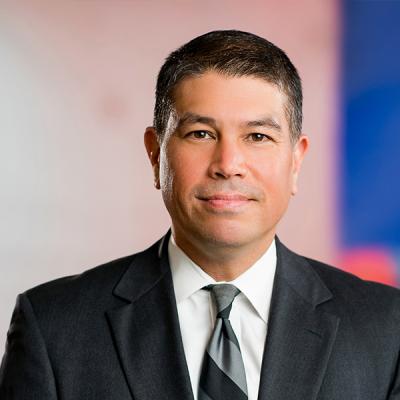Congress Passes AI Deepfake Law, Trump Signs EO on AI Education — AI: The Washington Report
- On April 29, 2025, Congress passed the TAKE IT DOWN Act in a rare moment of nearly unanimous support for AI-related legislation. The act would prohibit the publication of non-consensual intimate imagery (NCII), including AI-generated deepfakes, and require websites and social media platforms to take down such content.
- The act is headed for President Trump’s desk, where it is expected to be signed into law and, if so, would become the first US law to substantially regulate certain AI-generated content.
- The week before, President Trump also signed an Executive Order (EO) on “Advancing Artificial Intelligence Education for American Youth.”
- The EO aims to cultivate AI interest and expertise in America’s youth “to maintain America’s global dominance in this technological revolution for future generations.” It establishes a White House Task Force on AI Education, launches a Presidential AI Challenge, enhances training for educators on AI, and promotes AI-related apprenticeships.
On April 29, 2025, Congress passed the TAKE IT DOWN Act in a rare moment of nearly unanimous support for AI-related legislation. The act would prohibit the publication of non-consensual intimate imagery (NCII), including AI-generated deepfakes, and require social media platforms to take down such content. The legislation’s passage shows that there is support in Congress to protect against certain AI-related harms, especially related to NCII, with targeted regulations. The act is now headed for President Trump’s desk, where it is expected to be signed into law and, if so, would become the first US law to substantially regulate certain AI-generated content.
The week before, President Trump signed an Executive Order (EO) on “Advancing Artificial Intelligence Education for American Youth.” The EO aims to cultivate AI interest and expertise in America’s youth “to maintain America’s global dominance in this technological revolution for future generations.” The EO establishes a White House Task Force on AI Education, launches a Presidential AI Challenge, enhances training for educators on AI, and promotes AI-related apprenticeships.
Congress Passes AI Deepfake Law
The TAKE IT DOWN Act, originally introduced by Ted Cruz (R-TX) and Amy Klobuchar (D-MN), is the first law passed by Congress that substantially regulates a certain type of AI-generated content. The House passed it by a 409-2 vote on April 29, after the Senate passed it by unanimous consent in February, as we wrote about.
The act would make it illegal to “knowingly publish” NCII, including visual depictions “created through the use of software, machine learning, artificial intelligence, or any other computer-generated or technological means.” The act establishes a “reasonable person” test for determining NCII, which when “viewed as a whole by a reasonable person, is indistinguishable from an authentic visual depiction of the individual.” Penalties include up to three years of prison time.
The TAKE IT DOWN Act also requires “covered platforms” – including websites and social media platforms – to remove NCII within 48 hours of notice by any victims.
President Trump Signs AI Education EO
President Trump’s new AI Education EO establishes that it is US policy to “promote AI literacy and proficiency among Americans by promoting the appropriate integration of AI into education, providing comprehensive AI training for educators, and fostering early exposure to AI concepts and technology to develop an AI-ready workforce and the next generation of American AI innovators.”
- AI Education Task Force: The EO establishes an AI Education Task Force, which will be led by the Director of the Office of Science Technology Policy and include several cabinet members. The task force is responsible for advancingthe US policy on AI education.
- Presidential AI Challenge: The task force shall, within 90 days of the EO,plan and implement a challenge to “encourage and highlight student and educator achievements in AI, promote wide geographic adoption of technological advancement, and foster collaboration between government, academia, philanthropy, and industry to address national challenges with AI solutions.”
- Education and AI: The task force shall also establish public-private partnerships with academic institutions and AI industry leaders to “develop online resources focused on teaching K-12 students foundational AI literacy and critical thinking skills.” The Secretary of Education shall also, within 90 days of the EO, publish “guidance regarding the use of formula and discretionary grant funds to improve education outcomes using AI.”
- AI Educators: The Secretary of Education, within 120 days of the EO, “shall prioritize the use of AI in discretionary grant programs for teacher training,” with a focus on reducing administrative tasks, training teachers, and provide “professional development in foundational computer science and AI.”
- AI Apprenticeships: The Secretary of Labor, within 120 days of the EO, shall promote AI-related apprenticeships by “prioritizing the development and growth of Registered Apprenticeships in AI-related occupations” and allocating existing discretionary funds “to engage industry organizations and employers and facilitate the development of Registered Apprenticeship programs in AI-related occupations.”
The AI Education EO is the latest AI-related EO by the new administration. As we wrote about, President Trump signed EOs to repeal former President Biden’s AI EO, initiate an AI Action Plan, and increase coal production for AI data centers.
We will continue to monitor, analyze, and issue reports on these developments. Please feel free to contact us if you have questions as to current practices or how to proceed.
Authors
Bruce D. Sokler
Member / Co-chair, Antitrust Practice
Alexander Hecht
ML Strategies - Executive Vice President & Director of Operations
Christian Tamotsu Fjeld
Senior Vice President





